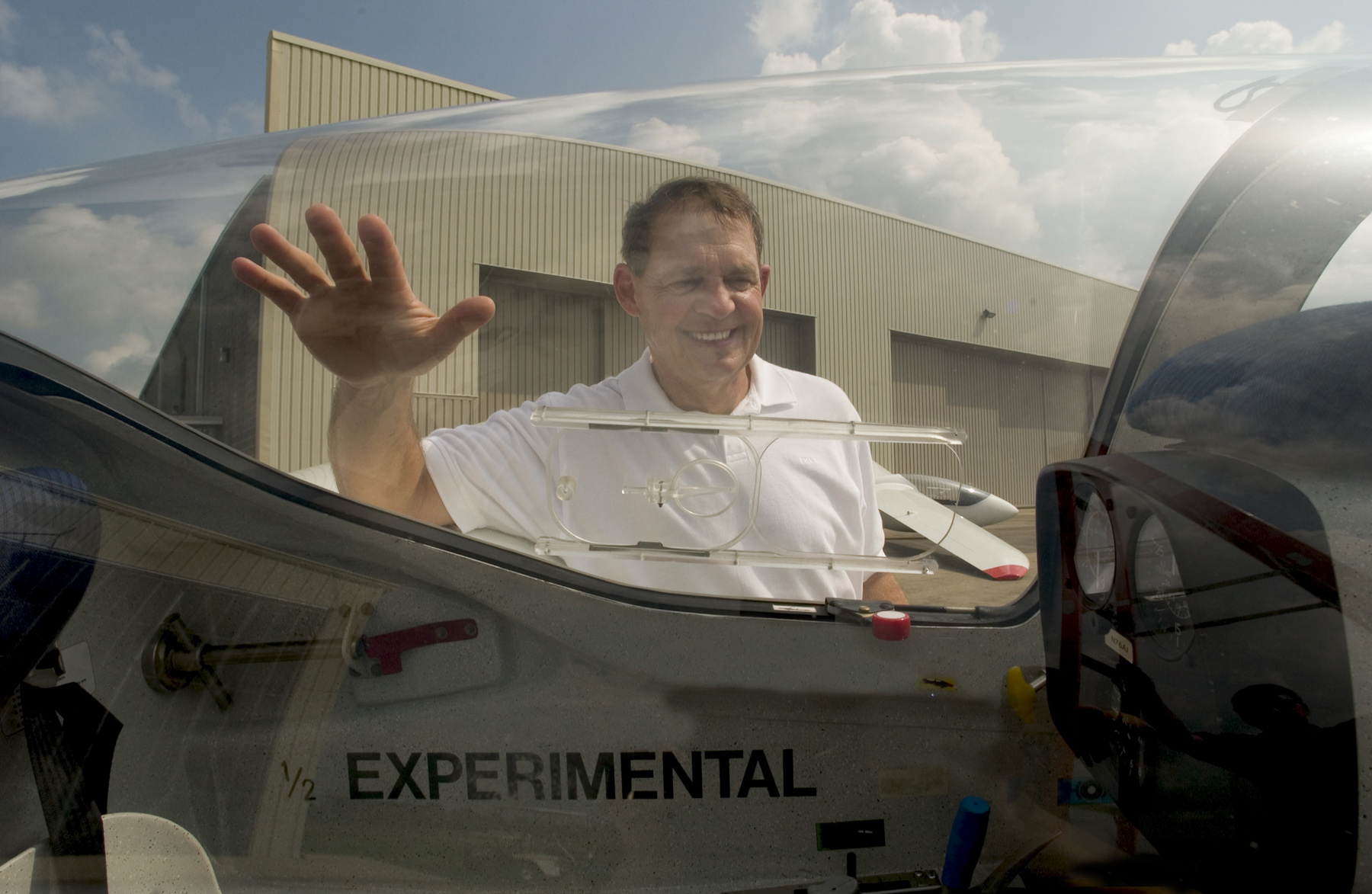Contact: Phil Hearn

David Lawrence
Mississippi State's Raspet Research Flight Laboratory will use an initial $3 million federal defense grant to help design a new-generation unmanned aerial vehicle that could strengthen U.S. battlefield surveillance capabilities.
The congressional dollars will flow through the Advanced Technology Directorate of the U.S. Army's Space Missile Defense Command in Huntsville, Ala., in fiscal year 2005 to tap Raspet's research expertise in composite materials and glider technology.
"What we're proposing to do with the $3 million is develop a lower-cost, ultra-light unmanned aerial vehicle, or UAV sensor platform," said Raspet director David Lawrence, a former test pilot and retired flight operations company president.
"We believe we can take the lightweight composite technology and sailplane aerodynamic know-how that we've gained over the past 50 years and develop a platform that will carry appropriate sensors and stay aloft for long periods of time," he added.
The U.S. Department of Defense has used UAVs in military operations since the 1950s to provide reconnaissance, surveillance and intelligence of enemy forces without risking the lives of an aircrew. The remotely piloted or self-piloted aircraft can carry cameras, sensors, communications equipment or other payloads.
Models in use since the mid 1990s include the U.S. Air Force's Predator, a long-endurance and medium altitude system that can provide over-the-horizon mission capabilities and carry Hellfire laser-guided missiles; and the high-altitude Global Hawk system for long-endurance reconnaissance missions.
"In Iraq, for instance, our troops need to be able to pinpoint the origin of mortar fire on a very timely basis," said Lawrence. "They can't do that very well from a ground-based sensor. But, from an airborne platform that has an acoustic sensor, you can get an instantaneous direction as to where the mortar round was fired, and you can have a lot quicker response in real time to take care of the enemy who fired the shot."
The Raspet lab is a nationally recognized design and development resource for high-performance sailplanes and full-scale turbine-powered aircraft, with a solid research-and-testing track record dating back to the early 1950s. It recently completed the wing molds for a new generation UAV aircraft to be fielded next year.
"I'm delighted to see the contribution that Raspet research is making to national defense," said Colin Scanes, MSU's vice president of research and graduate studies.
The lab currently is working with the ATK Co. of Iuka, which manufactures the Global Hawk, on the development of high-temperature composite materials and processes. It also is working with Huntsville, Ala.-based Miltec Inc. and its Oxford-based subsidiary, MRT, on development of a "plug-and-play" sensor package that will provide high-tech mission flexibility for future UAVs.
"Plug-and-play means you can put an IR (infrared) sensor on board or if you need an EO (electro-optical or video) sensor, you just unplug the IR sensor," Lawrence explained. "Also, you can use an acoustic sensor to provide a 360-degree detection range. Working with Miltec, we'll put this package up front in the design process to make sure we've got the right power, field of views and vibratory environment the sensors need."
By utilizing carbon fiber and apoxy composites, as well as sailplane design techniques, Lawrence believes Raspet can produce a UAV that is both lighter and stronger than existing models, that can carry larger payloads, maintain longer flight duration and sharply scale down the current $10 million cost per UAV.
"The initial wingspan we're envisioning is about 50 feet, a little bit smaller than the Predator and much lighter, with a weight of less than 500 pounds," said Lawrence. "An aluminum structure, if optimized, can carry about 30 percent of its weight in terms of payload. With this new, lighter composite structure, we can almost double that. We can carry a lot more fuel or a lot more of a sophisticated sensor package."
Lawrence said Raspet needs more than $16 million over the next three years to expand its current eight-member staff and purchase the testing equipment it will need to fully develop the UAV project and "establish ourselves as a state-of-the-art flight research laboratory."
University officials said U.S. Rep. Roger Wicker, R-Miss., a member of the House Appropriations Committee, played a major role in helping the university land the initial $3 million SMDC grant, which will allow Raspet to start putting the necessary infrastructure in place during the 2005 fiscal year.
Tom Edwards serves as research director and Calvin Walker is chief engineer at Raspet, which operates as a unit of MSU's aerospace science engineering department. Lawrence said he hopes to hire a senior design engineer, a chief systems integrator and program manager, a business manager, and "a person who understands how to design composite structures."
The director said he plans to modify a lightweight glider produced by Californian Danny Howell to serve as a structural basis for testing an ultra-light UAV sensor platform; and will seek to obtain a two-place powered glider, either by donation or lease, for use in developing a flight control system.
"One of my visions and goals is that Raspet laboratory will be the focal point for development of technology that ultimately will benefit the state of Mississippi," said Lawrence. "We can develop a platform that can be manufactured in the state, provide a place for high-tech development, and employ engineers we grow within the state.
"Raspet should be about helping students gain a foothold in the work place because of what we're able to teach them here at MSU, while providing exposure in the real-world workplace," he added. "Our main objective is to train students."